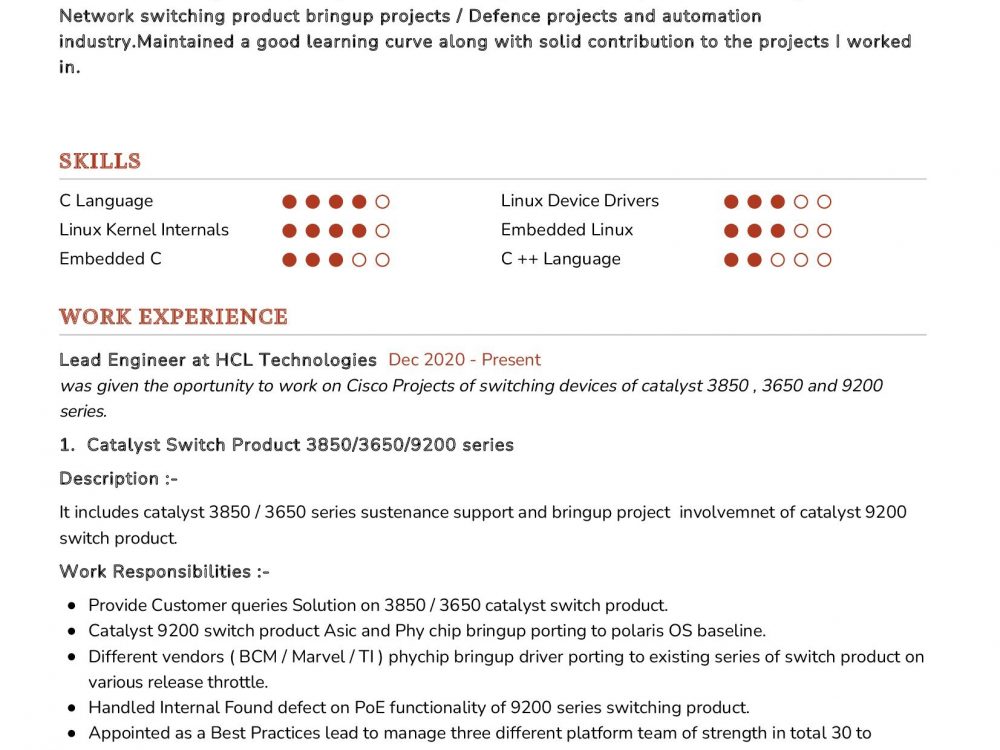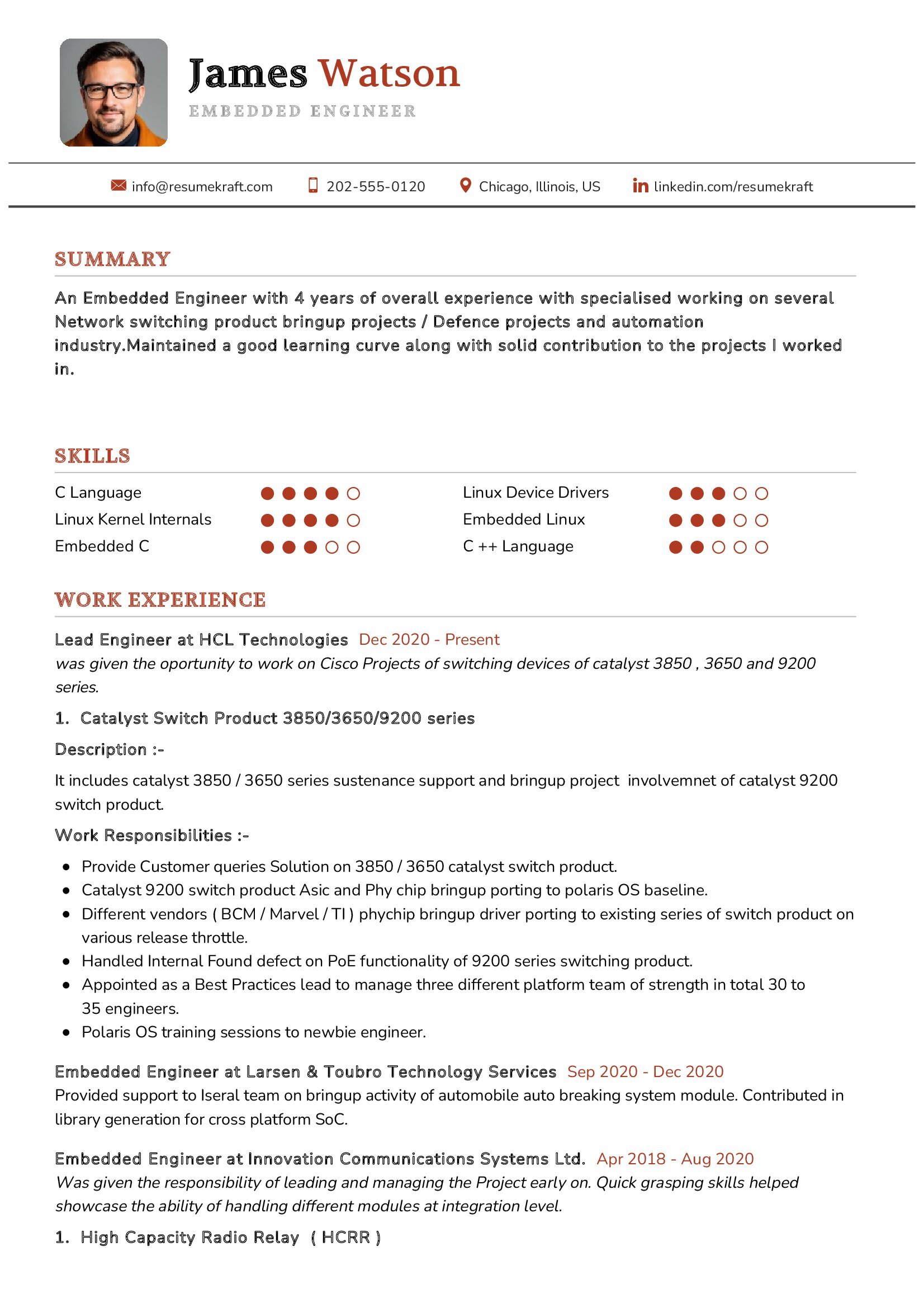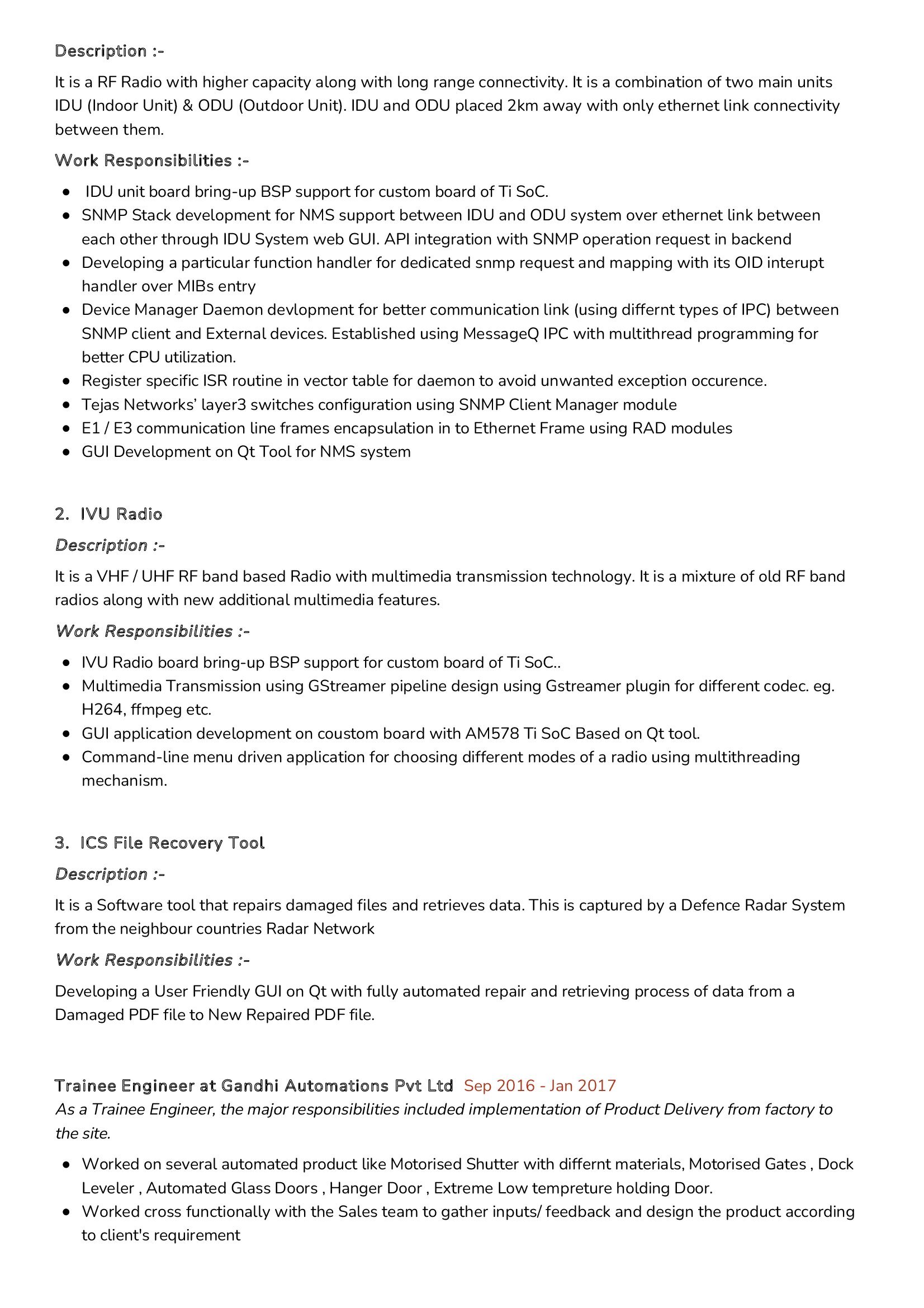Exploring the Role of an Embedded Engineer
The field of Embedded Engineering plays a pivotal role in shaping the technological landscape, and the position of an Embedded Engineer is at the forefront of innovation. This article delves into the multifaceted role of an Embedded Engineer, combining technical prowess with effective leadership to drive success in the ever-evolving realm of embedded systems.
Key Responsibilities of an Embedded Engineer
Embedded Engineers are instrumental in designing, developing, and maintaining embedded systems, bringing together hardware and software to create seamless solutions. Let’s take a closer look at the diverse responsibilities that define the role of an Embedded Engineer:
- Architecting and implementing embedded systems, ensuring optimal functionality and performance.
- Collaborating with cross-functional teams to integrate software and hardware components effectively.
- Debugging and troubleshooting embedded systems, resolving issues to guarantee smooth operation.
- Staying abreast of emerging technologies and industry trends to enhance system capabilities.
- Conducting thorough testing and validation of embedded systems to ensure reliability.
- Documenting design specifications and system configurations for future reference and improvement.
Each responsibility presents its unique challenges, requiring a blend of technical expertise and problem-solving skills.
Essential Skills and Qualifications for an Embedded Engineer
Becoming an Embedded Engineer demands a specific skill set and educational background. Here are the key requirements to thrive in this role:
- A Bachelor’s or Master’s degree in Electrical Engineering, Computer Science, or a related field.
- Proficiency in programming languages such as C, C++, and Python, crucial for embedded systems development.
- Hands-on experience with microcontrollers, microprocessors, and embedded hardware design.
- Strong problem-solving skills and the ability to analyze complex systems and optimize performance.
- Knowledge of communication protocols like I2C, SPI, and UART for effective hardware communication.
- Experience with real-time operating systems (RTOS) to ensure timely and precise system responses.
- Excellent teamwork and communication skills to collaborate effectively with diverse teams.
Securing additional certifications in embedded systems or related technologies can add value to your profile.
Crafting Your Embedded Engineer Resume
Your resume is the gateway to opportunities, and crafting an impactful one is crucial. Here are some tips to create a compelling resume as an Embedded Engineer:
- Highlight your hands-on experience with specific embedded systems projects, showcasing your contributions.
- Detail your proficiency in programming languages, emphasizing their application in embedded systems development.
- Showcase your problem-solving skills by narrating instances where you successfully resolved complex issues in embedded systems.
- Include metrics to quantify your achievements, such as improvements in system efficiency or successful project completions.
- Customize your resume for each application, aligning your skills and experiences with the specific job requirements.
Your resume should be a reflection of your journey, skills, and the unique value you bring as an Embedded Engineer.
Embedded Engineer Resume Summary Examples
Your resume summary sets the tone for your professional story. Here are some examples tailored for an Embedded Engineer:
- “Results-driven Embedded Engineer with a track record of designing and implementing innovative embedded systems, contributing to a 15% increase in overall system efficiency.”
- “Experienced Embedded Engineer proficient in C and C++ programming, adept at troubleshooting and optimizing embedded systems for seamless functionality.”
- “Detail-oriented Embedded Engineer with expertise in real-time operating systems, committed to ensuring the precision and reliability of embedded solutions.”
Your summary should provide a snapshot of your skills, experiences, and the impact you bring to the table.
Building Your Embedded Engineer Experience Section
Your experience section is the heart of your resume, showcasing the milestones and challenges you’ve conquered. Here are examples to guide you:
- “Led the development of an embedded system for IoT applications, resulting in a 25% improvement in data processing speed.”
- “Collaborated with a cross-functional team to integrate new features into an existing embedded system, enhancing overall product capabilities.”
- “Implemented robust testing protocols, reducing system bugs by 30% and ensuring the reliability of embedded systems in critical applications.”
Each experience should tell a story of your expertise, teamwork, and impact on the projects you’ve been a part of.
Education Section for Your Embedded Engineer Resume
Your educational background is a foundation for your career. Here’s how you can showcase it:
- Master of Science in Electrical Engineering, XYZ University, 2018.
- Bachelor of Science in Computer Science, ABC University, 2015.
- Embedded Systems Certification, Institute of Embedded Technology, 2019.
Highlight your educational achievements and any relevant certifications that add value to your profile.
Key Skills for Your Embedded Engineer Resume
Your skill set is your toolkit for success. Here are essential skills for an Embedded Engineer:
Technical Skills:
- Programming languages: C, C++, Python
- Microcontroller and microprocessor expertise
- Embedded hardware design
- Real-time operating systems (RTOS)
- Communication protocols: I2C, SPI, UART
Soft Skills:
- Problem-solving and analytical thinking
- Effective teamwork and communication
- Attention to detail
- Adaptability to evolving technologies
Each skill is a tool in your arsenal, showcasing your ability to excel as an Embedded Engineer.
Common Mistakes to Avoid in Your Embedded Engineer Resume
Steer clear of common pitfalls to ensure your resume stands out:
- Avoid generic language; tailor your resume to the specific job requirements.
- Focus on achievements rather than just listing duties to provide depth to your narrative.
- Include a cover letter to connect personally with potential employers and showcase your enthusiasm for the role.
- Balance technical details; avoid overwhelming your resume with complex jargon.
- Proofread meticulously to maintain a professional image and avoid errors.
Avoiding these mistakes will help your resume shine, making a compelling case for your candidacy as an Embedded Engineer.
Key Takeaways for Your Embedded Engineer Resume
As you navigate the process of crafting your Embedded Engineer resume, remember these key points:
- Highlight your hands-on experience and specific contributions to embedded systems projects.
- Emphasize your proficiency in programming languages and their application in optimizing embedded systems.
- Showcase your problem-solving skills through real-world examples of overcoming challenges in embedded engineering.
- Quantify your achievements with metrics to demonstrate the impact you’ve had on system efficiency and project success.
Now armed with these insights and tips, you’re ready to create a resume that not only reflects your journey and skills but also positions you as a standout Embedded Engineer. Best of luck!
Finally, feel free to utilize resources like AI Resume Builder, Resume Design, Resume Samples, Resume Examples, Resume Skills, Resume Help, Resume Synonyms, and Job Responsibilities to create a standout application and prepare for the Embedded Engineer job interview questions.



